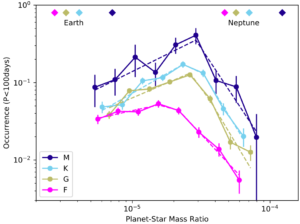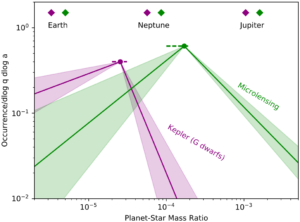I’m sitting in the hotel lobby at the Woodlands Marriott, waiting for my supershuttle to IAH and recouperating from my second Lunar and Planetary Sciences Conference, LPSC. Before I’m whisked away back to Boise, I thought to write about a few of the fascinating and mind-blowing things I saw this week.
First of all, LPSC is an annual conference that focuses on the geology, geochemistry, and geophysics of planetary science. There’s a lot of focus on solar system bodies with solid surfaces, as opposed to the annual DPS meeting, which has a bit broader focus.
I arrived on Sunday evening and dove immediately in, helping with the First-Timers’ presentation review, an opportunity for new-comers to the meeting to have more senior folks provide feedback on their posters or oral presentations.
Monday dawned cloudy, and I sat through several talks about our sister planet Mars. One that stuck out for me was one about field experiments to explain the perennially mysterious gully formations found on martian slopes with sleds of dry ice.
Tuesday saw me in a session on Saturn’s moon Titan, a cornucopia of geology and atmospheric physics. One particularly impressive talk discussed work to understand how methane deluges on Titan modified the surface.
https://twitter.com/twitter/statuses/976110328567222272
Tuesday evening, I presented our group’s work flying drones through active dust devils.
Wednesday was packed with talks on sediment transport experiments and analyses, attempting to decipher the martian aeolian cycle, including a neat study of time-lapse imagery of martian dunes.
https://twitter.com/twitter/statuses/976474024736907264
Thursday was packed with Pluto and results from New Horizons. One talk that stuck in my mind was an analysis of landslides on Pluto’s moon Charon, which, frankly, was a little bit of a tear-jerker. Hard to believe that not one hundred years ago, we didn’t even know Pluto existed. Now we’re trying to understand the system’s geology.
https://twitter.com/decaelus/status/976910966150615040
Friday morning wrapped up the meeting with a series of talks about glacial geology on Mars, including a fabulous presentation on mysterious geomorphic features on Mars. Even though these features look for all the world like glacial flow, they appear on totally flat ground, where flow shouldn’t be possible.
https://twitter.com/decaelus/status/977197922067476480
And now to catch the shuttle.

